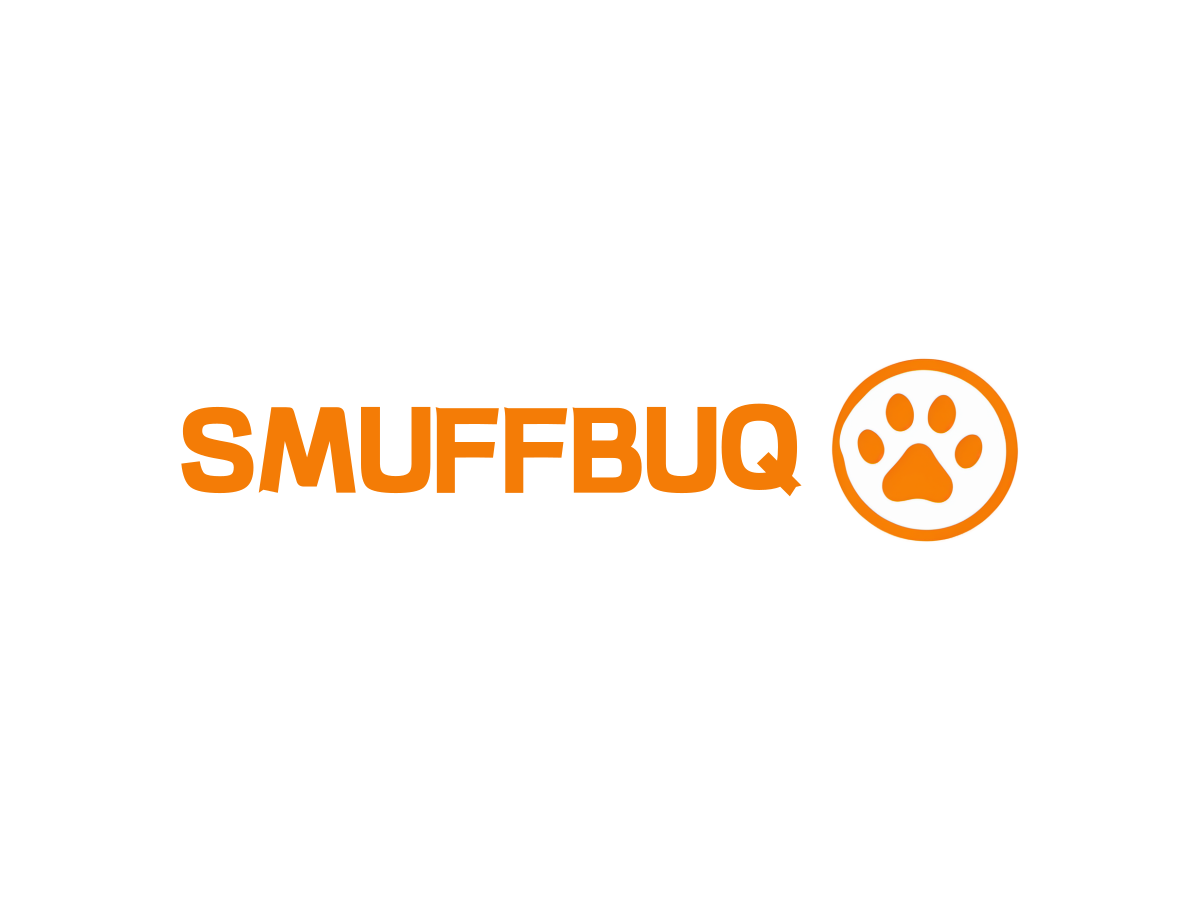How do you keep a leather dog leash supple and strong?
A beautiful leather leash can quickly become dry, cracked, and weak without proper care. Many dog owners invest in quality leather only to watch it deteriorate from neglect and exposure to the elements.
**To keep a leather dog leash supple and strong, clean it regularly with saddle soap, condition it monthly with To keep a leather dog leash supple and strong, clean it regularly with saddle soap1, condition it monthly with leather conditioner or neatsfoot oil, and store it properly away from extreme temperatures and direct sunlight
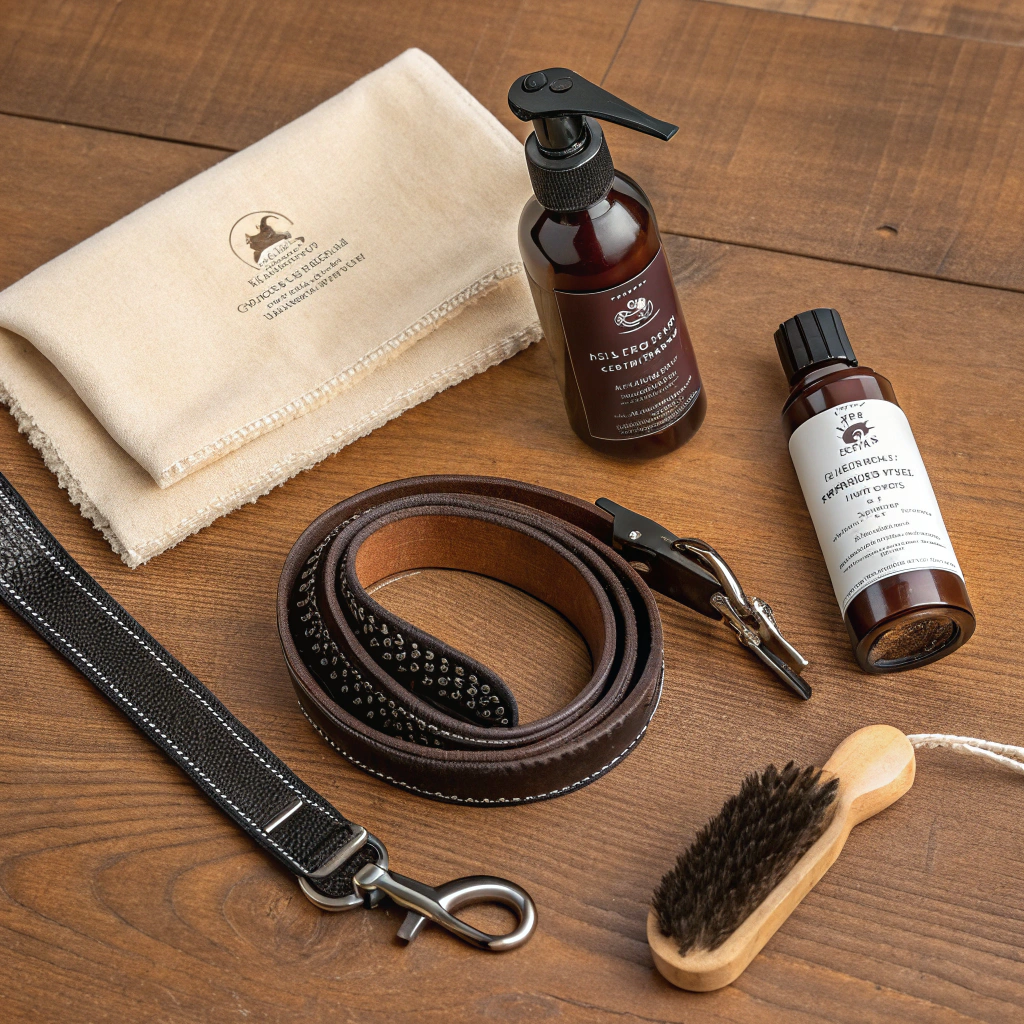
I’ve used leather leashes for over a decade with my dogs, and I’ve learned that proper maintenance makes all the difference. A well-maintained leather leash doesn’t just look better—it lasts years longer and provides safer, more reliable control. Let me share what I’ve learned about keeping leather leashes in prime condition.
How to care for a leather dog leash?
Your leather leash has been dragged through mud puddles, soaked in rain, and covered in slobber. Without proper care, these daily assaults will shorten its lifespan dramatically.
Proper leather leash care requires regular cleaning with saddle soap, conditioning with Proper leather leash care requires regular cleaning with saddle soap1, conditioning with leather oil, and appropriate storage in a cool, dry place
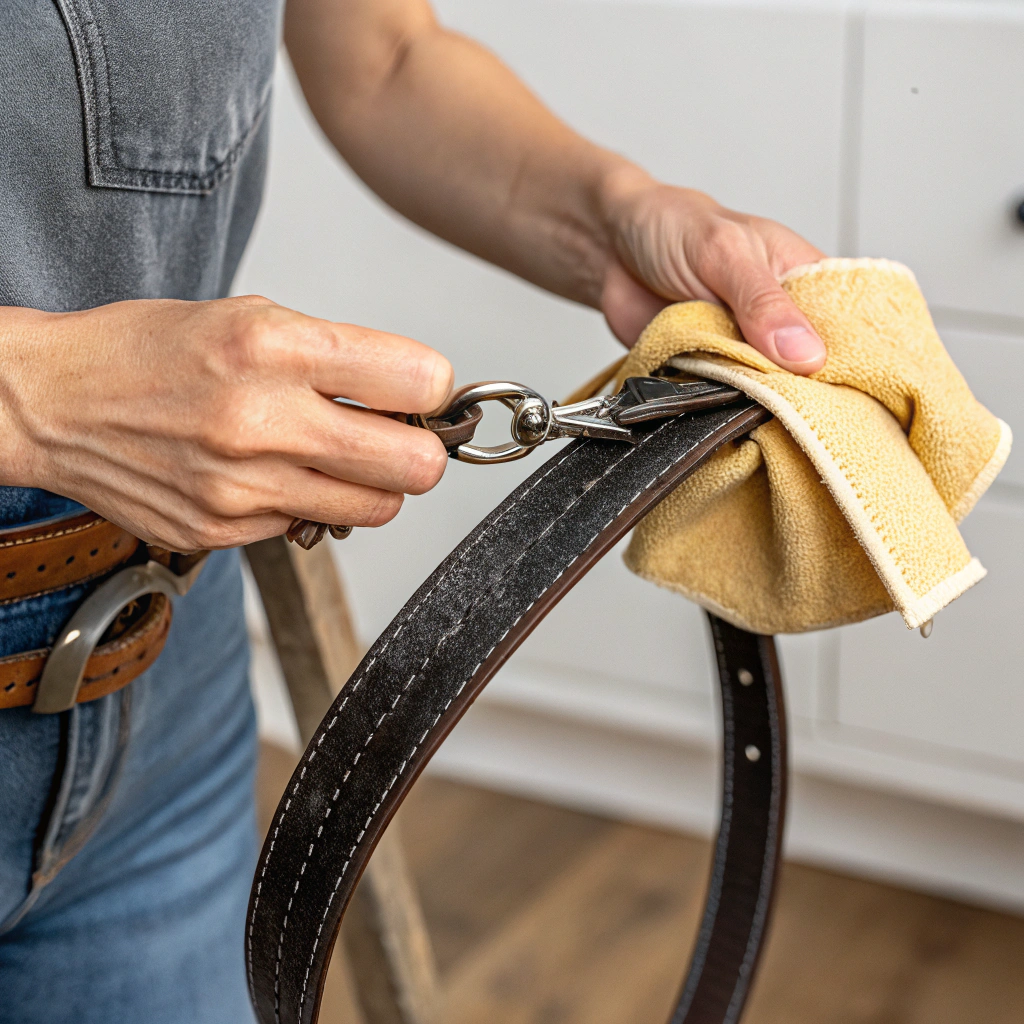
When I first invested in a high-quality leather leash for my German Shepherd, I was shocked at how quickly it began to stiffen and crack. I hadn’t realized that leather requires ongoing maintenance. After learning proper care techniques, my next leather leash has lasted five years and still looks great.
A comprehensive leather leash care routine doesn’t need to be complicated. Here’s my step-by-step approach that has kept my leashes supple and strong for years:
Regular Cleaning Routine
| Frequency | Task | Products Needed | Instructions |
|---|---|---|---|
| After every wet walk | Quick dry | Clean towel | Gently wipe down the entire leash to remove moisture |
| Weekly | Basic cleaning | Slightly damp cloth | Wipe away dirt, mud, and dog oils |
| Monthly | Deep clean | Saddle soap, soft cloth | Apply saddle soap in circular motions, wipe clean with damp cloth |
| Monthly (after cleaning) | Conditioning | Leather conditioner or neatsfoot oil | Apply thin layer of conditioner, let absorb completely |
| As needed | Hardware check | None | Inspect metal parts for rust or weakness |
One common mistake I made early on was over-conditioning my leather leash. Too much oil can saturate the leather, making it too soft and potentially weakening it. I’ve learned that a light application of conditioner once a month is typically sufficient for a regularly used leash.
Proper storage is equally important for leather care. I hang my leash on a hook in my entryway, away from direct sunlight and heat sources. Never store a damp leather leash in a closed container or plastic bag, as this can promote mildew growth. If your leash gets thoroughly soaked, allow it to air dry naturally at room temperature—never use a hairdryer or place it near a heater, as rapid drying causes theIf your leash gets thoroughly soaked, allow it to air dry naturally1 at room temperature—never use a hairdryer or place it near a heater, as rapid drying causes the leather to crack.
For hardware maintenance, check the metal clasps, buckles, and D-rings regularly for signs of rust or wear. A small amount of metal polish can keep these parts functioning smoothly and prevent them from staining the leather. Pay special attention to stitching, as this is often the first area to show wear and can compromise the leash’s strength if damaged.
How to soften a leather dog leash?
A stiff, unyielding leather leash is uncomfortable to hold and can cause hand fatigue. Worse, it might crack when bent, creating a serious safety hazard during walks.
To soften a leather dog leash, first clean it with saddle soap, then apply a quality leather conditioner like neatsfoot oil, mink oil, or beeswax-based products. Work the conditioner in with your hands, gently flexing the leather as you go. For very stiff leashes, repeat the process several times over a few days.
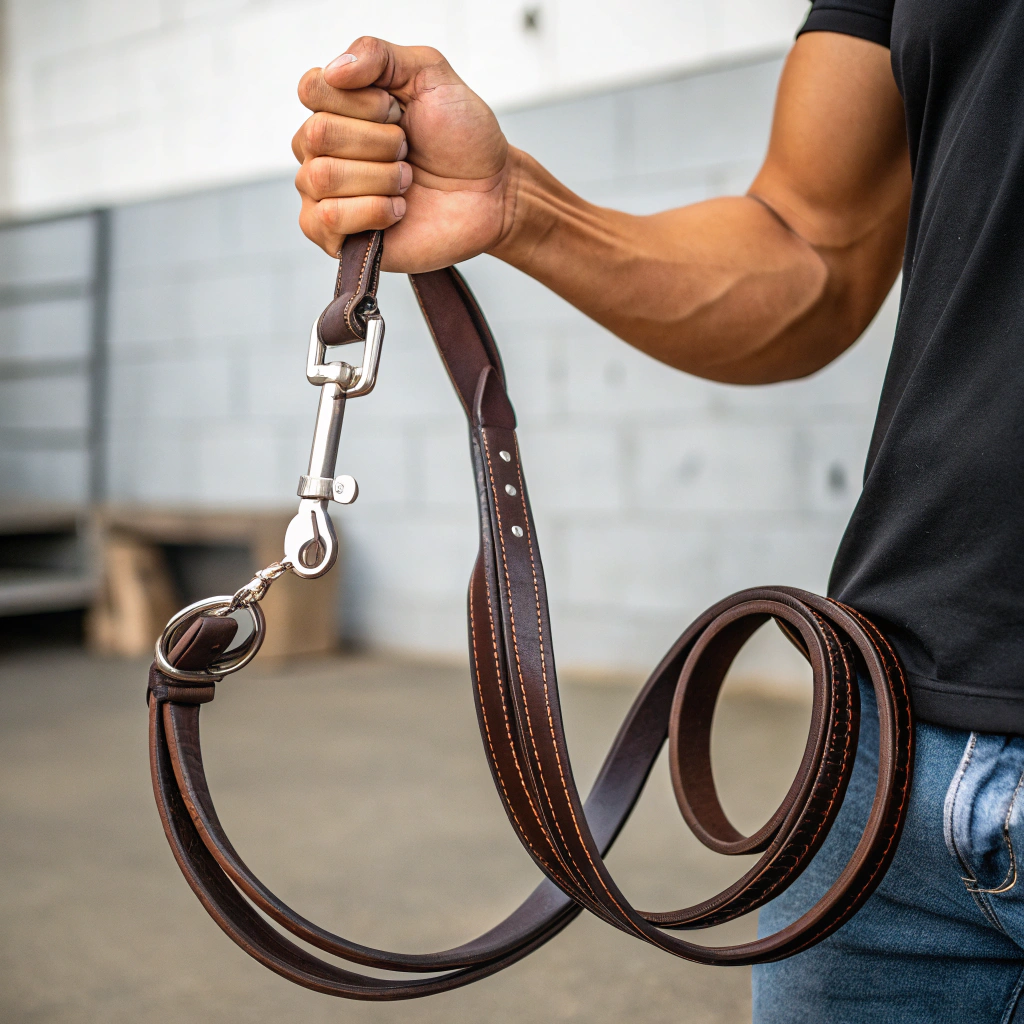
Last year, I found my old leather leash in storage—it was so stiff it could practically stand up on its own! I was about to throw it away when I decided to try restoring it instead. After a thorough cleaning and several conditioning treatments, it became wonderfully supple again. The transformation was remarkable.
When dealing with an extremely stiff leather leash, patience is key. Attempting to force flexibility too quickly can damage the leather fibers. I’ve developed this step-by-step process for safely softening even the most neglected leather:
Detailed Leather Softening Process
-
Initial Assessment: Examine the leash for cracks or damage. If the leather is cracked all the way through, softening won’t restore structural integrity, and the leash may need replacement.
-
Thorough Cleaning: Before adding any oils, remove all dirt and previous product buildup:
- Wipe with a barely damp cloth to remove surface dirt
- Apply saddle soap with a soft cloth using circular motions
- Wipe clean with a slightly damp cloth
- Allow to dry completely (usually 1-2 hours)
-
First Conditioning: Apply your chosen leather conditioner sparingly but thoroughly:
- Pour a small amount onto a soft cloth (not directly onto the leather)
- Work into the leather using circular motions, covering all surfaces
- Pay extra attention to stiffer areas
- Allow the conditioner to absorb completely (overnight is best)
-
Gentle Manipulation: After the first conditioning has absorbed:
- Gently roll and flex the leash in different directions
- Avoid sharp bends that could stress the fibers
- Work along the entire length, paying special attention to stiff spots
-
Second Conditioning: Repeat the conditioning process:
- Apply another light coat of conditioner
- Work it in well with your hands
- Let it absorb completely
-
Daily Flexing: For extremely stiff leashes:
- Spend a few minutes each day gently working the leather
- Roll it up differently each time to flex it in various directions
- After a few days of this treatment, even very stiff leather usually becomes pliable
Different conditioning products offer varying benefits. Neatsfoot oil penetrates deeply and is excellent for very dry leather1 but may darken the color
For particularly stubborn stiff spots, I sometimes use the "warm oil" method: slightly warm the conditioner (not hot!) before application, which helps it penetrate more deeply. Never use household oils like vegetable or olive oil, as these can turn rancid and damage the leather over time.
How long do leather leashes last?
When considering the higher investment in a leather leash, you probably wonder if the price is justified by longevity. Will it outlast those cheaper nylon alternatives?
A quality leather dog leash can last 10-15 years with proper care and maintenance. The lifespan depends on leather quality, frequency of use, exposure to elements, and maintenance routine. Premium full-grain leather properly maintained will far outlast cheaper split leather or bonded leather products, making it cost-effective1 in the long run
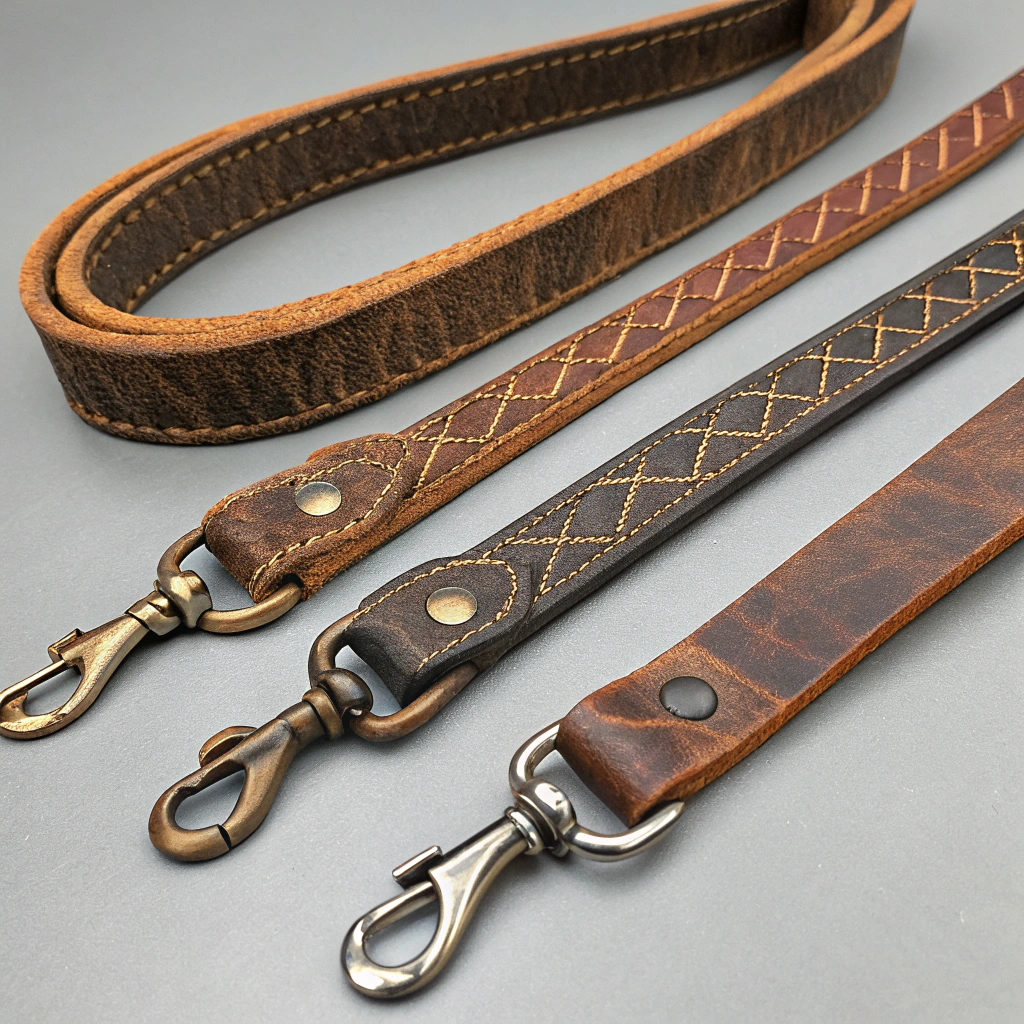
I still have my first high-quality leather leash from twelve years ago. After figuring out proper leather care, it’s developed a beautiful patina while remaining strong and functional. In contrast, I’ve gone through numerous nylon leashes that frayed, faded, or became brittle in just a year or two of regular use.
The longevity of a leather leash depends on several critical factors:
Factors Affecting Leather Leash Lifespan
| Factor | Impact | How to Maximize Lifespan |
|---|---|---|
| Leather Quality | Premium full-grain leather lasts 5-10 times longer than split leather | Invest in the highest quality full-grain leather you can afford |
| Manufacturing Quality | Hand-stitched with heavy-duty thread lasts longer than machine-stitched or glued | Look for reinforced stitching and quality hardware |
| Usage Frequency | Daily use causes more wear than occasional use | Rotate between two leashes if you walk daily |
| Climate Exposure | Extreme temperatures and humidity accelerate deterioration | Store properly and condition more frequently in harsh climates |
| Maintenance Routine | Regular care prevents premature aging | Establish and follow a consistent cleaning/conditioning schedule |
| Dog Size/Strength | Stronger dogs put more strain on leash materials | Choose appropriate width and thickness for your dog’s strength |
One interesting aspect of leather leashes is that they often develop a "breaking point" if consistently held or folded in the same position. I’ve noticed this most commonly where I typically fold the leash or where it bends around hardware components. To prevent this, I regularly change how I fold the leash for storage and vary my hand position slightly during walks.
Hardware failure is another common end-of-life issue1 for leather leashes
Signs that your leather leash needs replacement include:
- Cracks that go completely through the leather
- Significant thinning at stress points
- Loosening stitching that cannot be repaired
- Hardware that shows signs of metal fatigue
- Any compromise to the structural integrity that could lead to failure
When properly cared for, a quality leather leash becomes an heirloom item that develops character and patina with age while remaining functional. The initial investment may be higher, but the per-year cost often works out lower than continuously replacing cheaper alternatives. Plus, there’s something deeply satisfying about using a well-aged leather item that has accompanied you and your dogs on countless adventures over the years.
Conclusion
With regular cleaning, proper conditioning, and appropriate storage, a quality leather dog leash can remain supple, strong, and beautiful for over a decade. The time invested in maintenance pays dividends in longevity, appearance, and safety.
-
Learning about end-of-life issues can guide you in maintaining your leashes and ensuring safety for your pets.
is another common end-of-life issue for leather leashes. The metal components—clasps, D-rings, and rivets—can wear out or fail before the leather itself. Quality hardware makes a significant difference in longevity. Look for solid brass or stainless steel components, as these resist corrosion and maintain structural integrity far longer than plated metals. ↩ ↩ ↩ ↩ ↩ ↩
